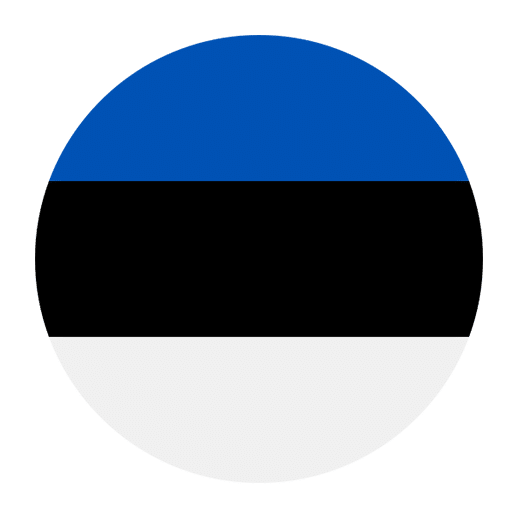Learning a new language can be a daunting task, but with the right strategies, building your vocabulary can become an enjoyable and rewarding experience. Estonian, a Finno-Ugric language spoken primarily in Estonia, may present unique challenges to English speakers due to its unfamiliar grammar, phonetics, and vocabulary. However, with structured approaches, consistent practice, and creative methods, you can effectively expand your Estonian vocabulary. This article aims to provide you with comprehensive strategies to build and retain Estonian vocabulary lists, making your language learning journey smoother and more productive.
Understanding the Basics
Before diving into specific strategies, it’s essential to understand some fundamental aspects of the Estonian language. Estonian vocabulary is influenced by both its Finno-Ugric roots and historical interactions with neighboring languages like German, Russian, and Swedish. This linguistic diversity means that while some words might seem familiar, others will be completely new.
The Estonian alphabet consists of 27 letters, and pronunciation can be quite different from English. Familiarizing yourself with the phonetic system and practicing pronunciation will greatly aid in your vocabulary acquisition.
1. Start with High-Frequency Words
When starting to build your Estonian vocabulary, focus on high-frequency words. These are the words that are used most often in everyday conversations. By learning these first, you will quickly gain the ability to understand and participate in basic dialogues.
Resources:
– Frequency lists: Look for lists of the most common Estonian words. These can often be found in language learning textbooks or online resources.
– Flashcard apps: Use apps like Anki or Quizlet, which often have pre-made decks of high-frequency Estonian words.
2. Use Thematic Vocabulary Lists
Organizing your vocabulary learning around specific themes can make the process more manageable and relevant. For example, you can create lists based on everyday categories such as food, travel, family, or work. This method not only helps with memorization but also allows you to use new words in context more easily.
Steps:
– Choose a theme: Pick a category that interests you or is relevant to your immediate needs.
– Gather words: Find a list of related words through textbooks, online resources, or language learning apps.
– Create sentences: Write simple sentences or short paragraphs using your new vocabulary to reinforce your learning.
3. Use Spaced Repetition Systems (SRS)
Spaced Repetition Systems are proven to be one of the most effective methods for long-term vocabulary retention. SRS tools work by spacing out review sessions based on how well you know each word, ensuring that you spend more time on words that are more difficult for you.
Tools:
– Anki: A popular and highly customizable SRS app.
– Memrise: Another SRS tool that also incorporates community-created content and gamification elements.
4. Incorporate Multimedia Resources
Incorporating various forms of media into your learning process can make vocabulary acquisition more engaging and effective. Listening to music, watching movies, or reading books in Estonian exposes you to new words in context and helps improve your overall language comprehension.
Suggestions:
– Music: Listen to Estonian music and try to understand the lyrics. This can be a fun way to learn colloquial expressions and improve pronunciation.
– Movies and TV shows: Watch Estonian films or series with subtitles to pick up new words and phrases.
– Books and articles: Start with children’s books or simple articles and gradually move on to more complex texts.
5. Practice with Native Speakers
Interacting with native speakers is one of the best ways to learn new vocabulary and practice using it in real-life situations. Conversations with native speakers can introduce you to slang, idiomatic expressions, and cultural nuances that you might not find in textbooks.
Ways to Connect:
– Language exchange: Use platforms like Tandem or HelloTalk to find language exchange partners.
– Online communities: Join Estonian language forums, social media groups, or Discord servers where you can practice with native speakers.
– Tutors: Consider hiring a tutor through websites like iTalki or Preply for more structured learning.
6. Use Mnemonics and Memory Techniques
Mnemonics and other memory techniques can be incredibly helpful for retaining new vocabulary. Creating associations between new Estonian words and familiar concepts can make them easier to remember.
Techniques:
– Visualization: Create vivid mental images that link the new word to its meaning.
– Acronyms: Use the first letters of a series of words to create a memorable acronym.
– Rhymes and songs: Make up rhymes or songs to help recall vocabulary.
7. Keep a Vocabulary Journal
Maintaining a vocabulary journal allows you to track your progress and review words regularly. Write down new words along with their definitions, example sentences, and any mnemonic devices you’ve created.
Tips:
– Consistency: Make it a habit to update your journal daily or weekly.
– Categorization: Organize words by themes, parts of speech, or difficulty level.
8. Engage in Active Learning
Active learning involves engaging with the material in a way that requires mental effort and participation. Instead of passively reading or listening, actively use new words in writing and speaking exercises.
Activities:
– Writing exercises: Write short stories, essays, or diary entries using your new vocabulary.
– Speaking practice: Practice speaking with a language partner or record yourself to improve pronunciation and fluency.
– Quizzes: Create quizzes or use apps to test your knowledge regularly.
9. Leverage Technology
Technology offers a plethora of tools and resources that can aid in vocabulary building. From mobile apps to online courses, leveraging these resources can make learning more accessible and efficient.
Recommendations:
– Duolingo: Offers a structured approach to learning Estonian vocabulary.
– Clozemaster: Focuses on learning vocabulary in context through sentence-based practice.
– Babbel: Provides comprehensive language courses with a focus on practical vocabulary.
10. Review Regularly
Regular review is crucial for long-term retention. Schedule consistent review sessions to go over your vocabulary lists, ensuring that you reinforce what you’ve learned and identify any gaps in your knowledge.
Review Methods:
– Weekly reviews: Set aside time each week to review your vocabulary journal and flashcards.
– Monthly assessments: Conduct more thorough assessments of your progress and adjust your learning strategies as needed.
Conclusion
Building an Estonian vocabulary list requires a combination of structured strategies, consistent practice, and creative methods. By starting with high-frequency words, organizing thematic lists, using spaced repetition systems, incorporating multimedia resources, practicing with native speakers, employing mnemonics, maintaining a vocabulary journal, engaging in active learning, leveraging technology, and reviewing regularly, you can effectively expand your Estonian vocabulary.
Remember that language learning is a marathon, not a sprint. Be patient with yourself, celebrate your progress, and stay motivated. With dedication and the right strategies, you will find yourself becoming more proficient in Estonian and enjoying the rich cultural experiences that come with it.

